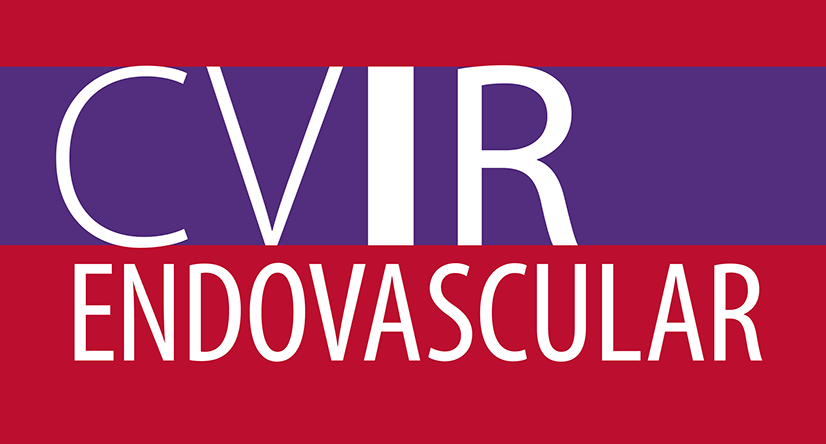This blog was cross-posted from the SpringerOpen blog.
Prof. Reekers, can you tell us about the CIRSE society and their support and involvement in the journal? What made the society decide to partner with SpringerNature to launch CVIR Endovascular?
The Cardiovascular and Interventional Radiological Society of Europe (CIRSE) is a non-profit scientific and educational society that was founded in 1985 with the aim to “improve patient care through the support of teaching, science, research and clinical practice in the field of cardiovascular and interventional radiology”.

The Society currently has over 7,000 academic members, with a global outreach covering a total of 38 European and international IR societies. With the growing number of manuscripts submitted to CIRSE’s longstanding high impact factor journal CVIR – CardioVascular and Interventional Radiology it became obvious that there is place for an additional spin-off journal entirely dedicated to the field of endovascular therapies.
CIRSE has recognized and understood how essential communication is for the continuous and stable development of IR and endovascular therapies. CVIR Endovascular will therefore offer a new low-entry podium for communications with peers, intended for all specialists working in the field of endovascular treatment.
Without the support of CIRSE and the CIRSE Office in Vienna, this project would not be possible. To work with SpringerNature as the publishing partner was a logical decision as we already partner with Springer on the publication of CVIR.
What do you see as being some of the key opportunities and challenges for the future of the journal’s field?
The field of endovascular treatment is very dynamic and we hope that CVIR Endovascular will mirror this. The key opportunity for CVIR Endovascular moving forward will be the fast communication and rapid exchange of new ideas within a large and global community.
CVIR Endovascular is a multidisciplinary open access journal and the first open peer-review journal in the field of endovascular interventions.
CVIR Endovascular is a multidisciplinary open access journal and the first open peer-review journal in the field of endovascular interventions. The journal shall serve as a podium for case reports, small case series, first in man, hypothesis, short communications, study protocols as well as, of course, clinical investigations, technical reports and systematic reviews.
As an electronic-only, open access journal we are not limited to page budgets or print issues. Many good manuscripts and case reports are currently being rejected by other journals because of these restrictions. This will not be the case with CVIR Endovascular. Manuscripts which receive a positive review and merit publication will be accepted.
The key challenge will be to work with the community of authors and CIRSE members to support the journal with their submissions and to achieve an impact factor for the journal in due course.
What do you think are the advantages of open access journals?
The greatest advantage is the unrestricted availability of content to everybody. Readers don’t need a membership or subscription to access full text manuscripts or download a paper. By this, authors achieve an unparalleled distribution of their work, something every author wants. Isn’t it what makes us write papers: to share our work with others?
Another advantage is that the author keeps the rights to their work and thus can use the material for other purposes as well.
CVIR Endovascular is the first open peer reviewed journal in the field of interventional radiology. Why open peer review?
This has to be seen in the context of the new scientific transparency. I think that open peer review is the future; we are probably just one of the frontrunners.
The peer review will not be a simple judgment any more; it will become a dialogue.
I have chosen to introduce this new peer-review model to encourage discussions. To have reviewer comments published together with the article and displayed for everyone to read and comment on below the article text will change the reviewer’s role from a “quick judge” to a mentor, allowing authors and readers alike to access useful additional information.
It may also reduce frustration, such as the authors’ feeling that the reviewer did not take a paper seriously or did not spend enough time to really properly evaluate it. With open peer review the reviewer will become somebody who helps in making a manuscript better.
The peer review will not be a simple judgment any more; it will become a dialogue and if the manuscript is accepted will be visible for all readers. We have now 6 months’ experience with open peer review and I have not seen any reviewer declining because of this new approach.
What are your visions for the journal’s future?
 I hope that CVIR Endovascular will become an important and internationally recognized podium for scientific and educational publications. Alongside of CVIR it shall become the next important forum for manuscripts published by CIRSE members and all other specialists involved in endovascular therapy.
I hope that CVIR Endovascular will become an important and internationally recognized podium for scientific and educational publications. Alongside of CVIR it shall become the next important forum for manuscripts published by CIRSE members and all other specialists involved in endovascular therapy.
I think the concept is right: we offer open access, open peer review, unlimited global distribution through a strong publication partner. In the next few years we need the support of our academic community to embrace the new addition to the CIRSE publications family.
I therefore cordially invite all my colleagues to submit their contributions, to act as reviewers and to spread the word to motivate others to do the same. As we gain momentum, our vision of a new exciting platform for endovascular science and education will become true.

Comments